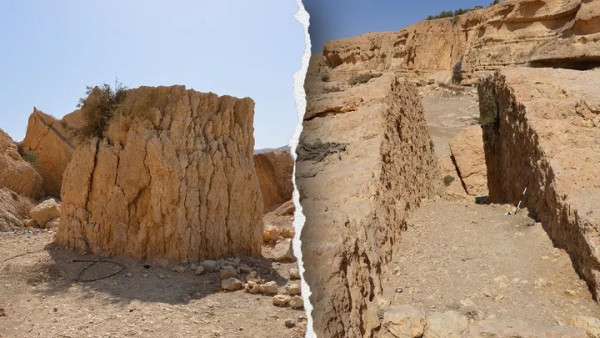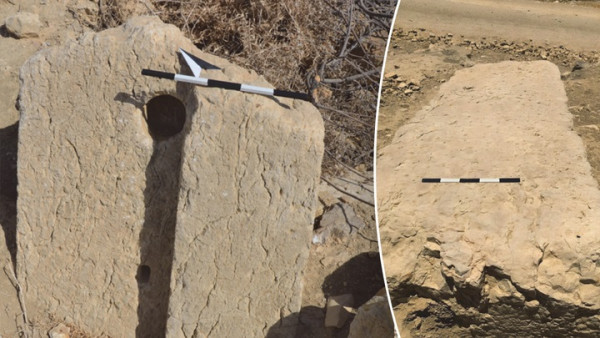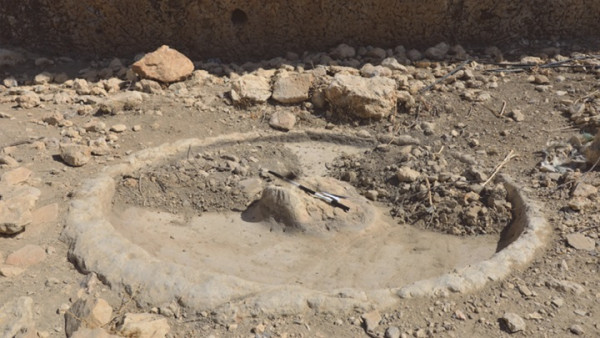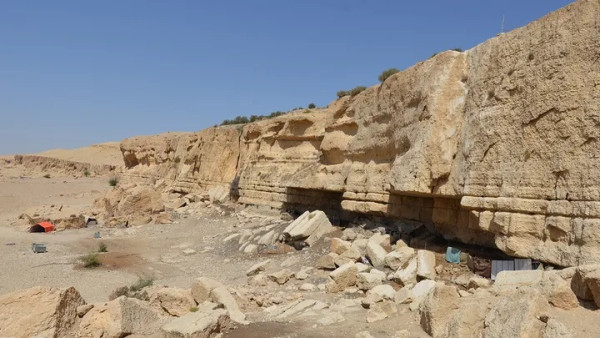
The lost Byzantine city of Tharais in southern Jordan is believed to have been rediscovered by archaeologists in Jordan. (Musallam R. Al-Rawahneh)
Ishtartv.com - foxnews.com
By Andrea Margolis,
Published July 10, 2025
An archaeologist recently
uncovered the likely remains of a long-forgotten Byzantine settlement, offering
new insights into the history of Christianity in the Middle East.
Musallam R. Al-Rawahneh, an
associate professor of archaeology at Mu’tah University in Jordan, recently
published his findings in the journal Gephyra in May.
The archaeologist believes he's
uncovered the ancient site of Tharais, guided by the enigmatic Madaba Map – a
remarkable mosaic that has puzzled historians for centuries.
Speaking to Fox News Digital,
Al-Rawahneh said he located the site near the Jordanian village of El-ʿIrāq, in
an area known as Ain Al-Qala’a.
Though the site was lost to
obscurity, the historian said the once-thriving settlement was located
"strategically" along trade routes to the southeastern Dead
Sea region.
At the site, Al-Rawahneh and his
team uncovered artifacts ranging from pottery shards and stone tools
to glass remnants. He also uncovered fossils during his excavation.
The area was filled with
architectural remains, including a Byzantine church. When asked what was the
most interesting finding at the site, Al-Rawahneh pointed to several
discoveries, including the Christian church and an olive oil press.
The church, which the historian
called "basilica-style," retained fragments of mosaic floors typical
of Byzantine Christian sites.
"[It] reflects Byzantine
design, including a prominent entrance and possible remnants of decorative
elements," he said.
Archaeologists also found various
inscriptions, which Al-Rawahneh said were linked to ancient funerary practices.
While the inscriptions require
further research, the professor said they "may include Christian imagery
and references," which will provide more insight into ancient
religious practices.
So what led to Tharais becoming
"lost"? Al-Rawahneh said the site was abandoned by the 7th century
A.D., based on what archaeologists have learned about activity in the area.
The expert pointed to changes in
trade routes, earthquakes and environmental changes as possible reasons.
Al-Rawahneh also noted that the
area transitioned from Byzantine to Islamic control in the seventh century.
More research is in the works,
including surveys of surrounding areas and additional analysis of the artifacts
that were found, he said.
In the future, Al-Rawahneh said he
hopes that upcoming research will "enhance the understanding of Tharais
and its significance within the broader context of Byzantine archaeology in
Jordan."
The Byzantine Empire, also known
as the Eastern Roman Empire, lasted from 330 A.D. to the 15th century.
The empire began to take shape in
330 A.D., when Constantine the Great moved the Roman capital to Byzantium,
which he renamed Constantinople.
Many fascinating finds from the
Byzantine era still turn up in Asia Minor and the Middle East today.
In May, Israeli officials put a
1,600-year-old Byzantine-era mosaic from a Christian monastery
on public display for the first time.

Archaeologists discovered part of the main entrance frame of the church, seen at left, as well as a remnant of the front facade of the church, shown at right. (Musallam R. Al-Rawahneh)

Al-Rawahneh said the discovery of an olive oil press, seen above, was one of the most interesting findings during the excavation. (Musallam R. Al-Rawahneh)

The site was likely abandoned by the 7th century due to a variety of factors. (Musallam R. Al-Rawahneh)
|